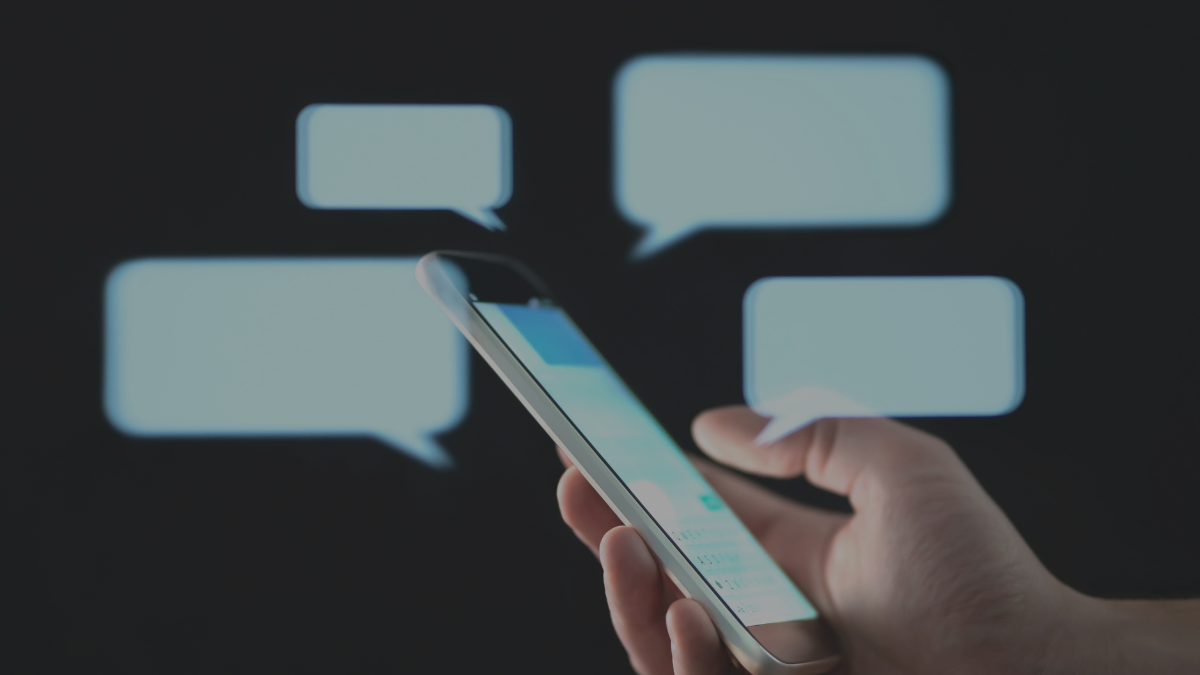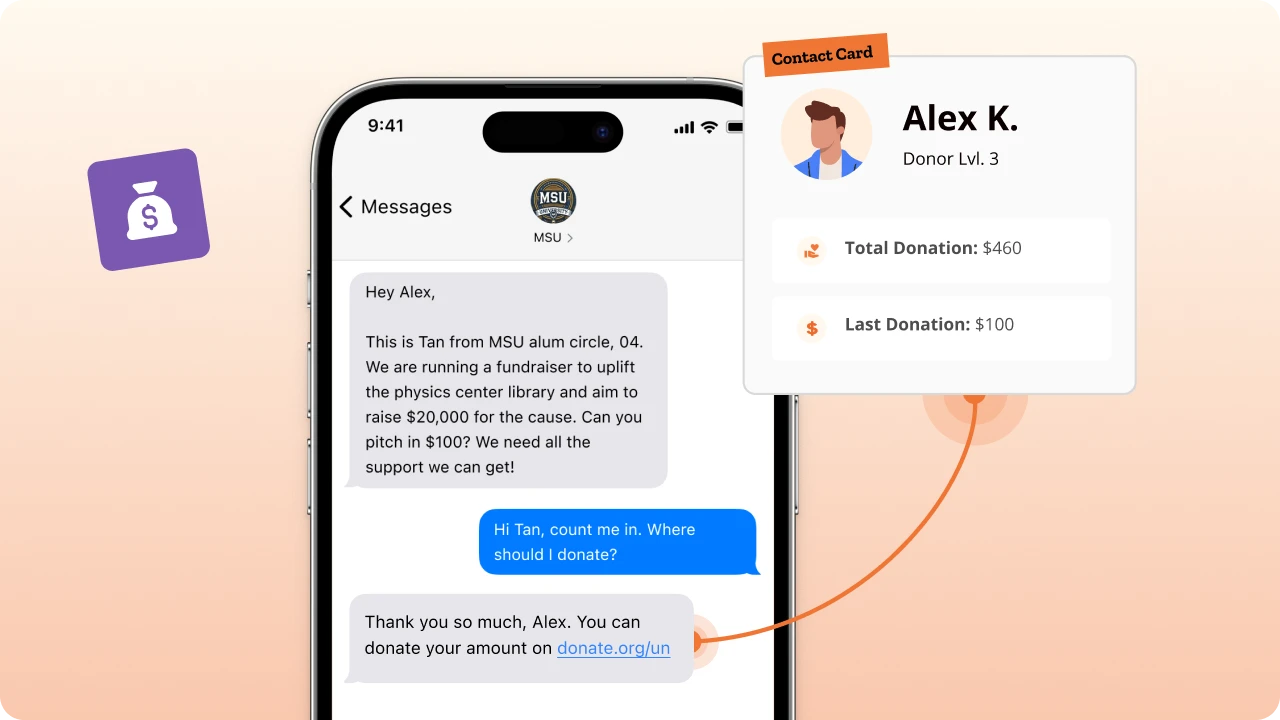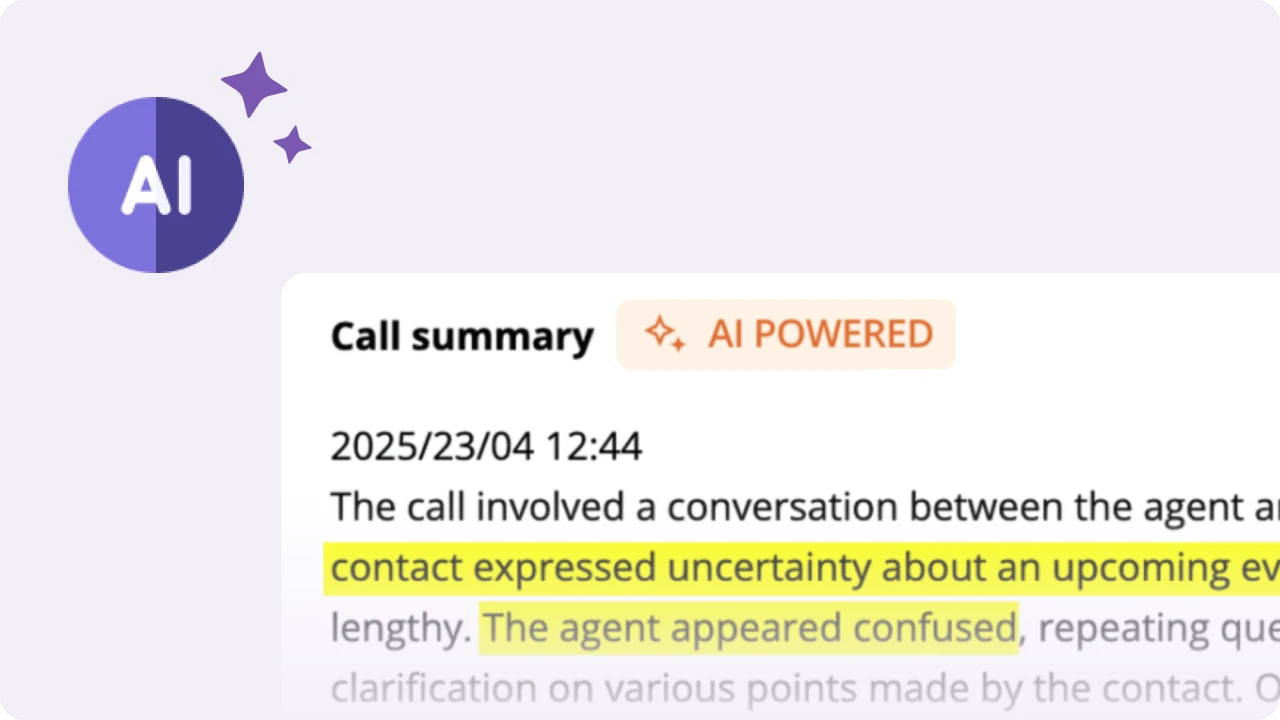Table of Contents
The future of mass texting is not just about sending text blasts faster anymore; it’s going to be smarter.
But how?
Imagine turning your political or nonprofit texts into interactive chats—with GIFs, videos, polls, or instant replies from AI-powered chatbots, just like on WhatsApp.
This evolution leads to richer communication that is timely yet personal. Organizations using AI-driven SMS see that 93% of leads are more likely to respond to texts.
This is the direction in which mass texting is heading. In this blog, we’ll explore upgrading your texting game with AI, automation, and yes, RCS.
Let’s get started.
Why does the future need a more innovative way of texting?
Over the past five to six years, people’s attention spans on screens have dropped to just 47 seconds—barely more than a blink! That’s why capturing consumer attention is more challenging than ever.
Channels like mail or social media fall short due to:
- Cluttered inboxes
- Log-in requirements
Text messaging, however, offers the organization a direct line to its audience
Let’s understand this by actually looking at the metrics of email vs SMS.
| Metric | SMS | |
| Open rate | 98% | 36% |
| Click-through rate | 10% | 3.8% |
| Response rate | 45% | 6% |
| Conversion rate | 29% | 15.22% |
| Average ROI | $71 for every $1 | $42 for every $1 |
Clearly, SMS outperforms email across every major engagement metric. Engagement is what matters at the end of the day.
SMS is the top performer; it’s a known fact by now. But the future of mass texting promises to make SMS faster, smarter, and even more impactful.
The role of AI in the future of mass texting
AI is the trending “buzzword” of the generation, transforming every industry you see. Studies have shown that AI-powered SMS marketing has helped organizations reduce their work hours by 4-6 hours per week. This is not just a trend anymore – it is the future of mass texting.
Let’s see how AI in mass texting can be used:
- AI content creation: We all know that using AI, we can generate 1000s of messages in just a few seconds based on keywords, tone, and campaign goals. However, compliance is very critical, so follow the rules set by the FCC:
- Get consent from the people you’re sending messages to.
- Have a disclaimer saying “This is AI-generated content” or “This message contains AI-generated content.” Suppose you have any AI-generated images, videos, etc.
| Best practice: Review AI-generated texts for clarity, tone, and compliance before sending. |
For example, a nonprofit planning a fundraising campaign can use AI to draft initial message templates. Before dispatching these messages, they must ensure recipients have consented to receive AI-generated content, maintaining compliance and trust.
- AI Chatbots: Did you know that chatbots can answer 79% of the routine questions? Yes, they do. Chatbots can:
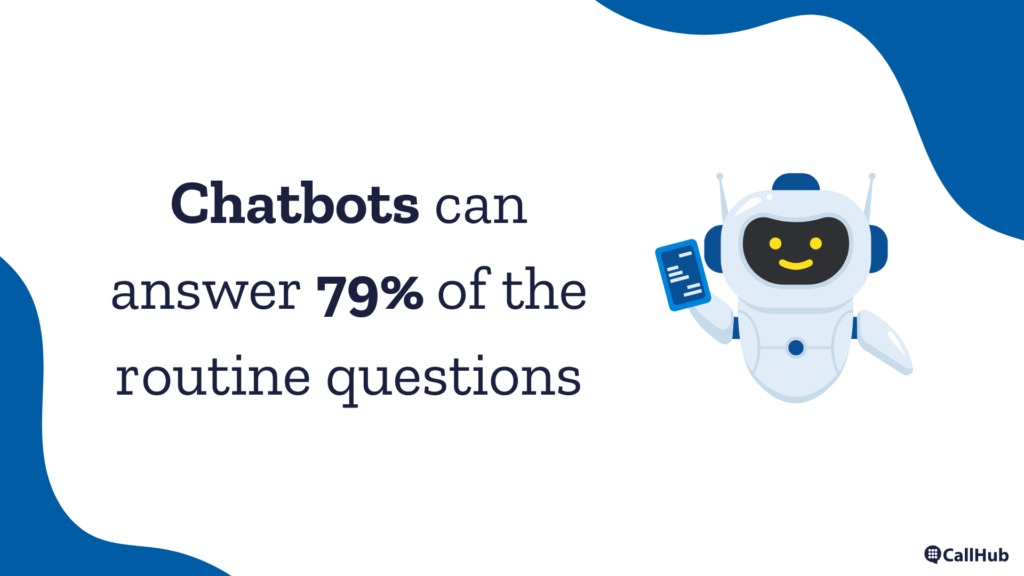
- Answer FAQs
- Make two-way communication possible
- Collect information
- Guide users with donations or RSVPs
Plus, chatbots can work 24/7 without any interruption once deployed.
For example, during a texting campaign, a chatbot can instantly reply to supporters asking how to donate or where funds go.
It can also send reminders to those who showed interest but didn’t complete their donation.
- AI-driven predictive messaging: AI does not just respond to messages; it intelligently determines when to send them.
AI checks previous data, such as donor or voter behavior or response time, and predicts the best time to contact each individual.
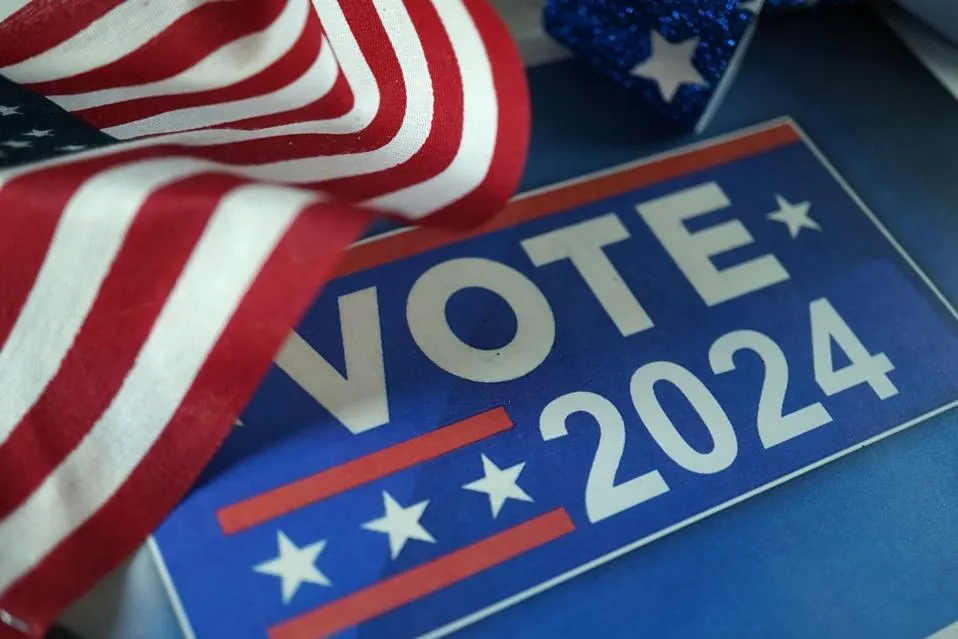
For example, in the 2016 U.S. presidential election, the “Trump campaign” used AI in text messaging to target voters with personalized messages based on demographic and behavioral data.
Did You Know?
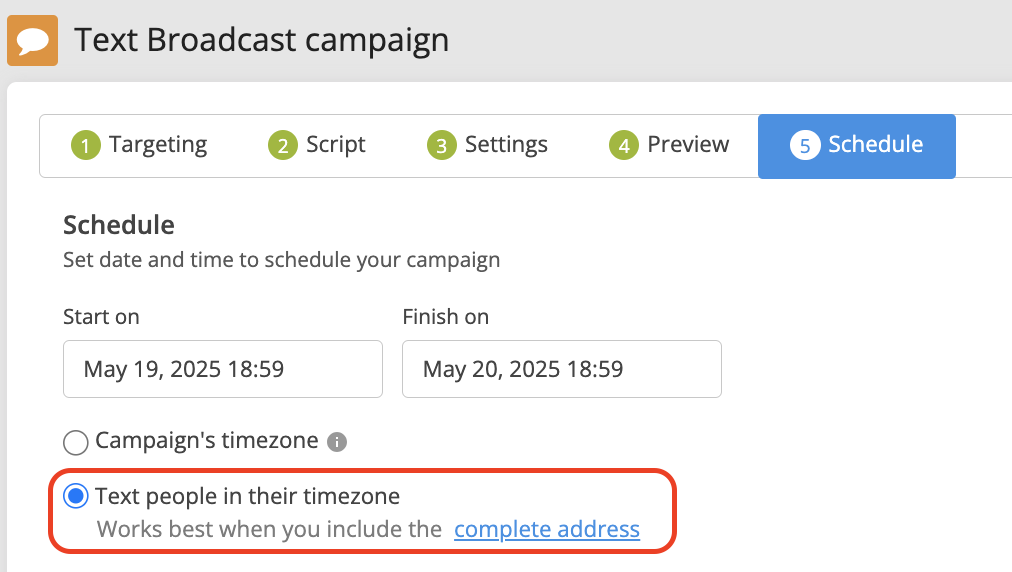
Source: CallHub
CallHub allows you to send your messages according to your contacts’ time zones with its smart timezone texting feature. Ensure your texts land at the right moment—no matter where your audience is.
- Quality assurance: AI can help you in quality assurance in various ways before sending. It can check:
- Grammar
- Tone
- Offensive language
- Opt-in
CallHub’s AI-enabled profanity filter detects and blocks offensive language in real-time, especially messages that contacts send to your agents. This helps protect your team from harmful or demotivating replies, ensuring more respectful campaign communication.

Source: CallHub
- AI reporting and analytics: Almost 48% of organizations use AI in some form to use their data effectively, all because AI doesn’t just report what happened, it explains why!
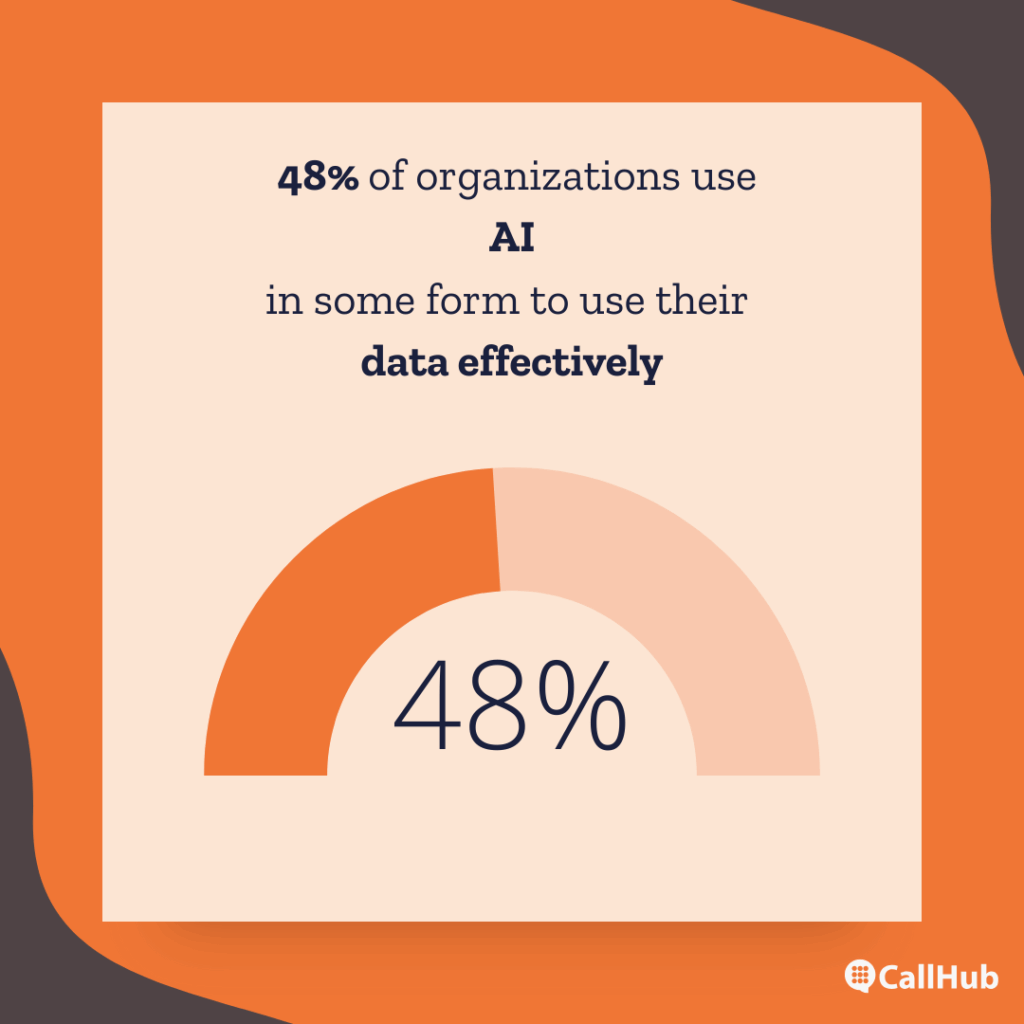
For example, it might reveal that messages sent at 1 pm local time have a 20% higher response rate, or that a specific call-to-action leads to more donations among a certain demographic.
While AI helps make your texting campaigns smarter, combining it with automation can make them more effortless.
Automation: Scaling outreach for future of mass texting
Well, who doesn’t want to automate things? Especially when it helps you reach millions of people at once.. Automation accelerates your workflow, allowing you to move faster while cutting costs by 40% to 70%.
Let’s see how to achieve this:
- Schedule campaigns: SMS automation allows you to set up your campaign during your work hours and launch it at the best time/date needed for the campaign. This ‘set it and forget it’ approach ensures your messages reach your audience when they’re most likely to engage.
For example, you can send an end-of-year donation appeal on specific dates for maximum impact or schedule GOTV (Get Out The Vote) reminders ahead of voting deadlines.
- Autoresponders: People just take 90 seconds to reply to a message. Imagine how a volunteer who has thousands of leads assigned can do this manually? But, with autoresponders, you can!
They instantly respond to incoming texts based on keywords or triggers by providing information, confirming actions, or guiding recipients through next steps. For example, a volunteer texting “JOIN” automatically receives event details and a registration link without delay.
At CallHub, we use “saved replies,” which respond automatically based on the trigger words mentioned in the campaign.
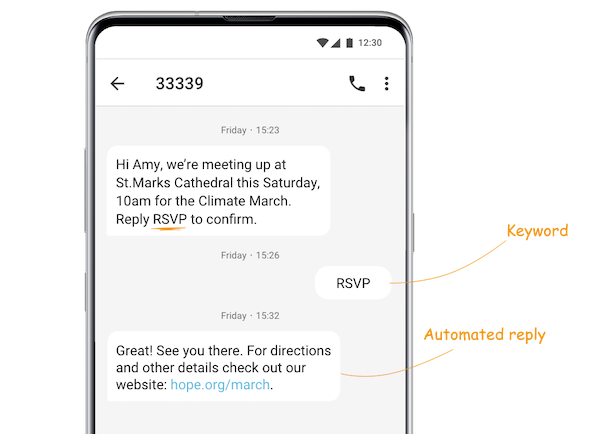
Source: CallHub
- Auto-reminders: Automated reminders ensure recipients don’t miss important dates, rallies, or deadlines by sending timely nudges. Studies show reminder texts can boost event attendance by up to 12%. Let’s see how?
Case Study: Healthy Marriage and Relationship Education (HMRE) Workshop
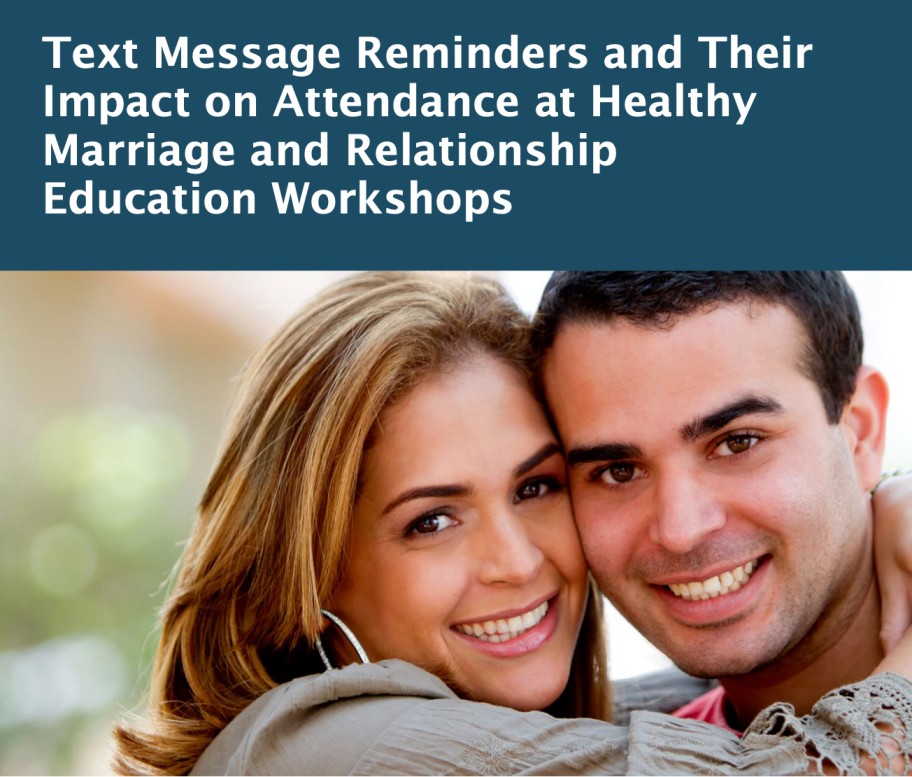
Source: ACF
Healthy Marriage and Relationship Education (HMRE) workshops
often struggled with low initial attendance from participating couples.
Problem: Many couples missed the first session, limiting the program’s overall impact and effectiveness.
Solution: Using SMS automation, auto-reminders containing just the date and time of the first session were sent to selected couples before their scheduled workshop.
Results: Initial attendance increased by 12% compared to couples who received no reminders.
With CallHub, you can set your messages to be sent hours or even days after your previous one.
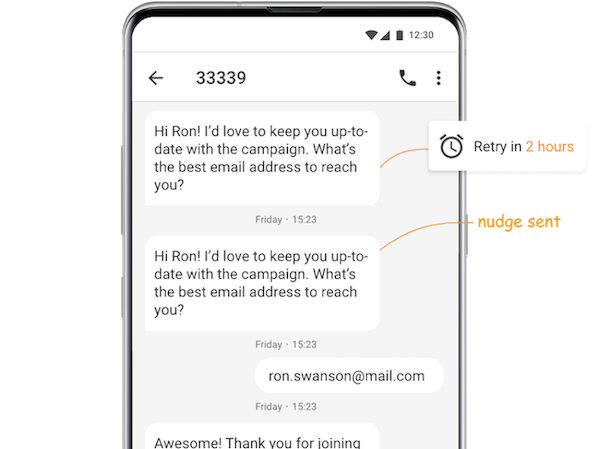
- Automatically remove opt-outs: SMS automation ensures compliance by instantly removing contacts who reply with opt-out keywords (like STOP, END, QUIT, etc.).
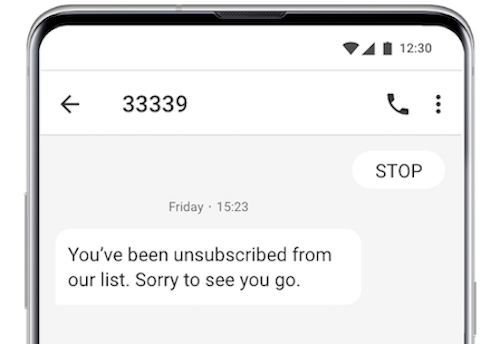
Now, you can segment users and focus on those who are actually interested in receiving your text messages.
| Automated opt-out management protects your organization from compliance risks and ensures only interested recipients are contacted. |
And if you’re wondering why I haven’t spoken about the next big thing in messaging yet—now’s the time. Let’s talk RCS!
RCS messaging: The future of mass texting
The actual future of mass texting is RCS messaging (rich communication services). It’s a type of interactive messaging with regular SMS.
Google alone sends about 1 billion RCS messages daily to enhance how people connect with each other over text messages. I mean, that’s huge!
But what makes RCS stand out from other forms of texting? Let’s find out
| SMS | Feature | RCS |
| 160 | Character Limit | 3072 |
| No | Media Support | Yes (large file sizes, HD quality) |
| No | Read Receipts | Yes |
| No | Typing Indicators | Yes |
| No | Internet-Based | Yes |
| No | Branding & Verification | Yes (with verified profiles) |
| No | Encryption | Yes |
For a more detailed comparison, see CallHub’s article on RCS vs SMS.
Key features of RCS:
- Interactive buttons: These buttons allow users to take the immediate next course of action, like RSVP for the event, learn more, or register now, without having to type a response.
- Interactive features: RCS brings in features to see if your recipients have read your messages or not, and typing indicators to make text conversations more interactive.
- High-resolution media: You can also add high-resolution media, not just images like in MMS, but videos, GIFs, or even carousels, with no significant file size restrictions.
For example, you’re trying to showcase your candidate’s debate highlights through video or share a nonprofit’s impact story through a carousel, making the message more engaging.
- Verified Sender: Businesses can obtain a verified sender ID, displaying their:
- Brand name
- Logo
- Verification badge in messages.
Studies show that 75% of consumers who receive branded text messages have increased trust in the communication.
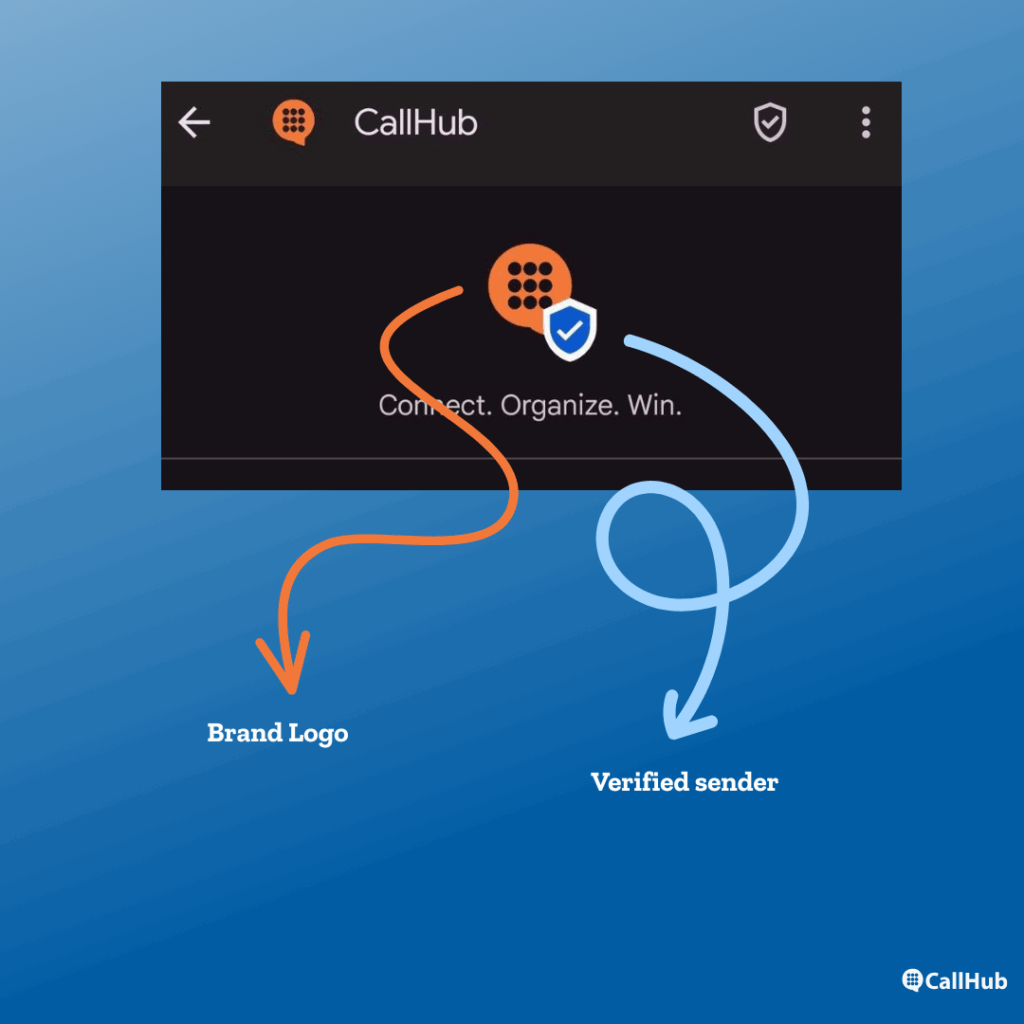
- End-to-end encryption: RCS supports end-to-end encryption in certain implementations (e.g., Google Messages), ensuring that only the sender and recipient can read the content.
Not all RCS platforms offer universal encryption yet, but adoption is expanding.
With CallHub,
you can take a step towards RCS messaging. You can directly apply for an RCS number once you are signed in.
Plus, RCS is free at CallHub for a limited time.
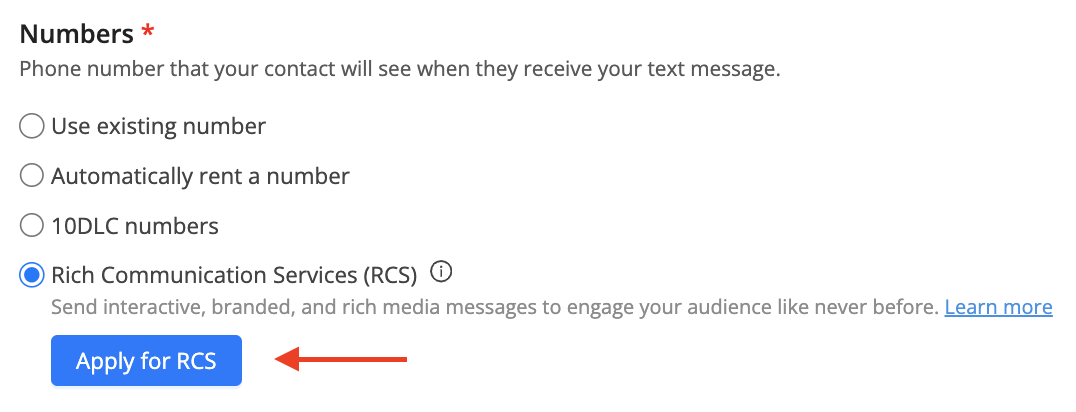
Source: CallHub
RCS is not just an upgrade– it’s the shift in the future of mass texting. Now imagine what it can do when paired with other communication channels.
Integration with other channels for omnichannel success
Relying solely on text messages—even with the latest trends—can help you reach your goal, but it may take longer. An omnichannel approach gets you there faster.
Take the example of the World Jewish Congress, which used a multi-channel strategy and saw an average donation of $274 per person, compared to $189 from a single-channel approach. That’s a significant difference of $85 per donor.
Let’s see how SMS complements other channels.
1. Driving immediate action from email campaigns:
Nonprofits and political campaigns can use SMS to reinforce emails sent, prompting immediate actions such as donations or event registrations.
For instance, after sending an email about a fundraising event, a follow-up text can remind recipients to RSVP or contribute, increasing participation rates.
2. Boosting social media engagement via SMS alerts:
Organizations can send SMS alerts encouraging supporters to share a campaign hashtag, participate in a social media challenge, or tune in to a live stream. This direct nudge via SMS can quickly mobilize a base for digital advocacy.
Follow CallHub’s social media pages to get the latest updates and trends.
3. Using data integration for personalized messaging:
By integrating SMS with CRMs, nonprofits and campaigns can unify supporter data, such as donation history, event attendance, and interests, to send highly targeted texts.
For example, a political campaign can text only those who attended a previous rally, or a nonprofit can send tailored appeals based on past giving patterns, maximizing relevance.
The final takeaway
As we reach the end of this topic, we all know that the future of mass texting is rapidly evolving, and it’s time for everyone to follow the trends.
The future of mass texting is smarter, more interactive, and deeply integrated with other channels.
Future-proof your campaign with CallHub—where AI, automation, and next-gen texting like RCS come together to reach your campaign goals.
